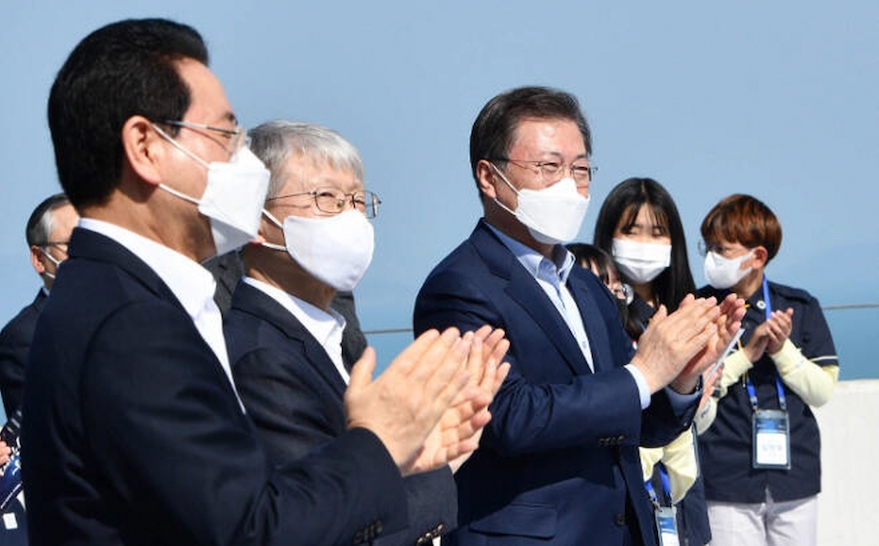
SEOUL, South Korea — President Moon Jae-in of South Korea has vowed to launch the nation’s first robotic lunar lander on a domestically developed rocket by 2030. Moon also said feasibility studies are underway for sending a spacecraft to Apophis, an asteroid that will pass near Earth in 2029.
These space exploration goals were unveiled, along with a set of other plans aimed at bolstering the nation’s space development capabilities, during his March 25 speech at Naro Space Center in Goheung.
“We will actively push for challenging space exploration projects that build on the foundation achieved by developing a Korean launch vehicle,” Moon said. “By 2030, we will achieve our dream of landing on the moon by using our own launch vehicle. The technological prowess, experience and confidence that will be gained from exploring the moon, the first step in space exploration, will provide a solid foundation for space development.”
This was Moon’s first public speech on space exploration since he took office in May 2017. It happened three days after South Korea’s CAS500-1 remote sensing satellite was sent into orbit on a Soyuz-2.1 rocket from Russia’s Baikonur Cosmodrome in Kazakhstan. The state-funded Korea Aerospace Research Institute (KARI) jointly developed the 500-kilogram satellite with a group of selected industry partners from 2015, sharing its core technologies and information with the latter from the get-go, the first case of this kind.
“Technology owned by state-funded research institutes will be transferred to the private sector in stages,” Moon said. “We will pursue institutional improvement as planned to establish a space industry cluster and vitalize the space service industry.”
Moon underscored the role of the private sector in enhancing Korea’s space development capabilities. To that end, he said, the government will step up efforts to build an “innovative industrial ecosystem that nurtures global space companies such as SpaceX.”
Another issue he put forth was strengthening international competitiveness of made-in-Korea satellite systems, in the lead-up to the introduction of 6G wireless networks, self-driving vehicles, and other products and services enabled or enhanced by satellites.
“We will continue to develop technological prowess by establishing a pilot network of communication satellites to usher in the 6G era, a Korean-engineered satellite navigation system essential for the autonomous vehicle and drone industries, and a nanosatellite constellation system to strengthen our space-related national defense,” he said.
Moon said a test site for solid-propellant launches will be built at Naro Space Center to support the growth of private-sector launch vehicle companies. The status of the Korea National Space Committee’s chairperson will be elevated with the Prime Minister taking on that post, he added.
Before delivering the speech, Moon observed from a distance a third round of combustion tests on the first stage engines of KSLV-2, the nation’s first domestically developed space launch vehicle, which is on track for its demonstration launch from the space center in October. The test lasted 127 seconds and revealed no apparent problems with the engines’ durability, according to KARI.
Boasting four 75-ton liquid engines in its first-stage booster, the three-stage KSLV-2 is meant to carry a 1.5-ton satellite into low Earth orbit. The second stage has a single 75-ton engine and the third stage has a seven-ton engine.
“It was an awesome experience to feel the ground shaking for 127 seconds,” he told invited guests, including chief executives of Hanwha Aerospace, Satrec Initiative, LIG Nex1 and CJ Olive Networks.
Moon’s speech follows his administration’s February pledge to spend 615 billion won ($553.1 million) in 2021 on space activities aimed at bolstering South Korea’s capacity to produce satellites, rockets and other key equipment.
Related
ncG1vNJzZmiroJawprrEsKpnm5%2BifLS71K2fZqOfp7KiuoylnJqclad6t7vWrGSlmZ6Ztq%2BzjKilZqyYmnquu86nZJuxXWd9dHyO